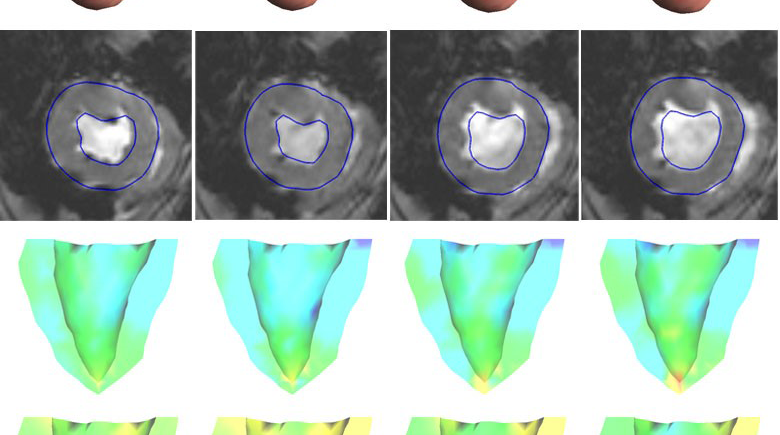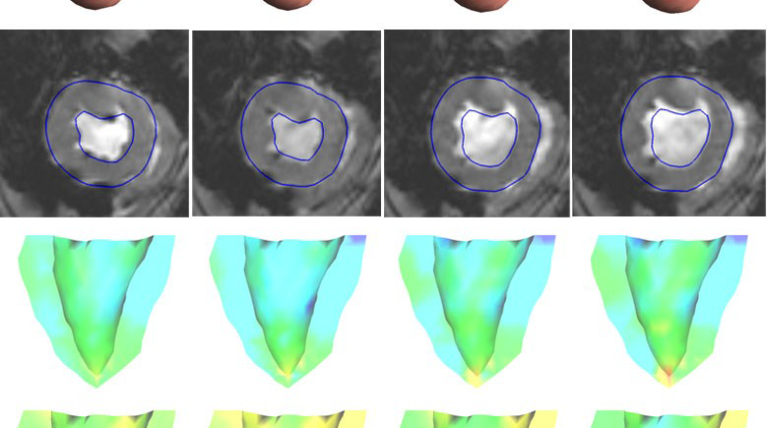
Although accurate and robust estimations of the deforming cardiac geometry and kinematics from cine tomographic medical image sequences remain a technical challenge, they have significant clinical value. Traditionally, boundary or volumetric segmentation and motion estimation problems are considered as two sequential steps, even though the order of these processes can be different. In this paper, we present an integrated, spatiotemporal strategy for the simultaneous joint recovery of these two ill-posed problems. We use a mesh-free Galerkin formulation as the representation and computation platform, and adopt iterative procedures to solve the governing equations. Specifically, for each nodal point, the external driving forces are individually constructed through the integration of data-driven edginess measures, prior spatial distributions of myocardial tissues, temporal coherence of image-derived salient features, imaging/image-derived Eulerian velocity information, and cyclic motion model of myocardial behavior. The proposed strategy is accurate and very promising application results are shown from synthetic data, magnetic resonance (MR) phase contrast, tagging image sequences, and gradient echo cine MR image sequences.

